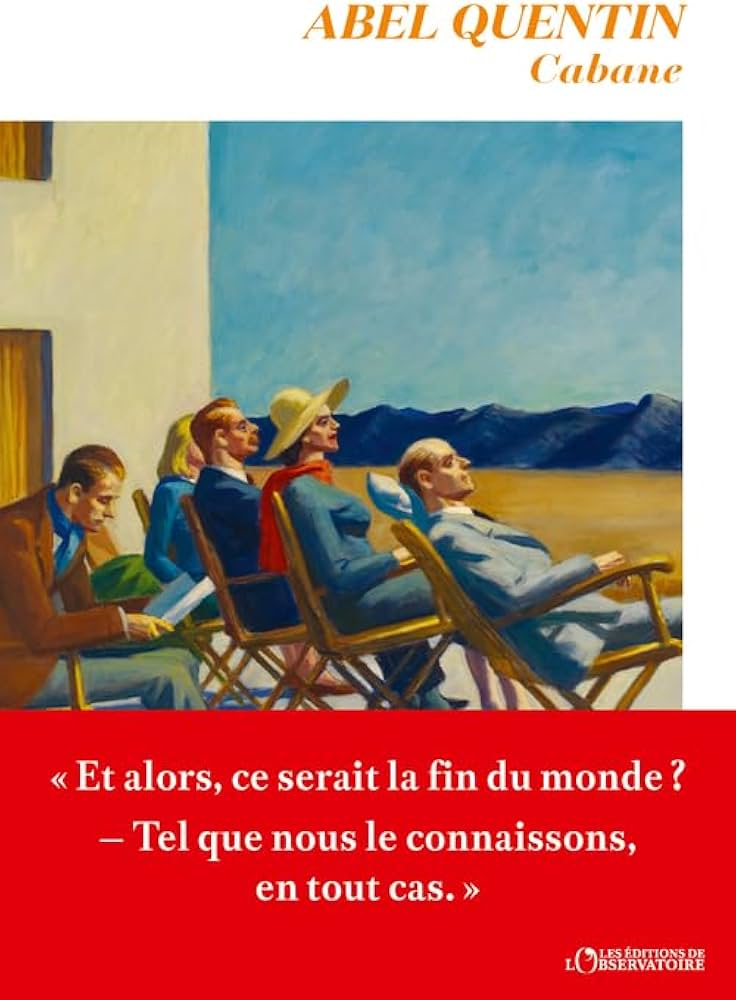After ‘Sœur’ and ‘Le voyant d’Étampes’, he has now written ‘Cabane’. The story, for its four researchers, of the aftermath of ’21 Report’. Back in 1973, they predicted that our world would collapse in the 21st century if industrial and demographic growth did not slow down significantly. A striking text. Before Abel Quentin comes to Athenaeum on 19 November, let’s take a look at the subject…
How did you come up with the idea for your 3rd novel?
I’d been interested in the theme of collapse for some time. Three years ago, reading the ‘Meadows Report’ was the spark that led me to write this novel. I also read ‘Jan Karski’, by Yannick Haenel, which, on a completely different subject, evokes the loneliness of the whistleblower. The person who has to pass on crucial information, but no one listens…
After Islamic radicalisation in ‘Sœur’, and social networks and identity entrenchments in ‘Le voyant d’Étampes’, you continue to explore the darkness of our world. What is it about the excesses of our societies that interests you so much?
I don’t know. The very specific ugliness of our times has always inspired me, as have crises: those of society and those of individuals.
Make no mistake, your novel is fiction. You imagine how the authors of the report live with the anxiety caused by the fear of the predicted collapse. Basically, it’s more a human adventure, with very personal stories, each of them ending up creating their own ‘hut’, than an analysis of a World system adrift?
Yes. The characters of the researchers are at the heart of the plot. I’ve worked to ensure that they are not just numbers or ideas, but flesh and blood beings. Fallible, complex people.
There are more than just the four authors of the report in your book. A 5th character appears: a journalist who decides to investigate the fate of the researchers in question. It’s rumoured here and there that there’s quite a bit of you in this freelancer. Is this true? In what way?
I suppose so. Rudy, the journalist, embodies the average person, who more or less knows that the ecological emergency is here, but manages to put it at a distance, to live in a form of comfortable tepidness. In the course of the story, as his investigation progresses, Rudy emerges from his torpor and is seized by anguish.
As you said, ‘Cabane’ is based on a primary reality, the publication of the ‘Meadows Report’, but it also draws on many other recent facts to support its argument. So much so that the reader is constantly left wondering: reality or fiction? Why this clever confusion?
What is very clear – it even appears on the first page of this novel, in a note to the reader – is that the ‘21 Report’ is directly inspired by the ‘Meadows Report’, but that the characters of the researchers have been invented from scratch. As for the rest, it’s true: I like to bring together fictional characters and real people, like Theodore Kaczynski for example (nicknamed ‘Unabomber’, editor’s note). But, in my mind, fictional characters really do exist.
Another distinctive feature of your book is its style, which is mostly indirect before using the ‘I’ in the final third. Was this a way for you to move into a new part of the book, in this case the thriller?
Yes, I think it was a necessary break in tone. The ‘I’ allows us to move forward ‘on-board camera’ in the story. We go from a camera on a drone to a GoPro, if you like.
Edward Hopper’s painting, ‘People in the sun’ (1960), was chosen to illustrate the front cover. Why that? What does it say about your subject?
Everyone is free to interpret it as they wish. It might be tempting to see these dozing figures, blinded by the sun, as a metaphor for our zombie-like humanity, marching towards the abyss.
How did you experience this report? Did it leave any marks? Did it leave any marks?
For me, this reading has reshuffled a lot of cards. Firstly, in my political vision of the world. Secondly, in terms of my lifestyle, I’ve rectified a few things. Not enough…


